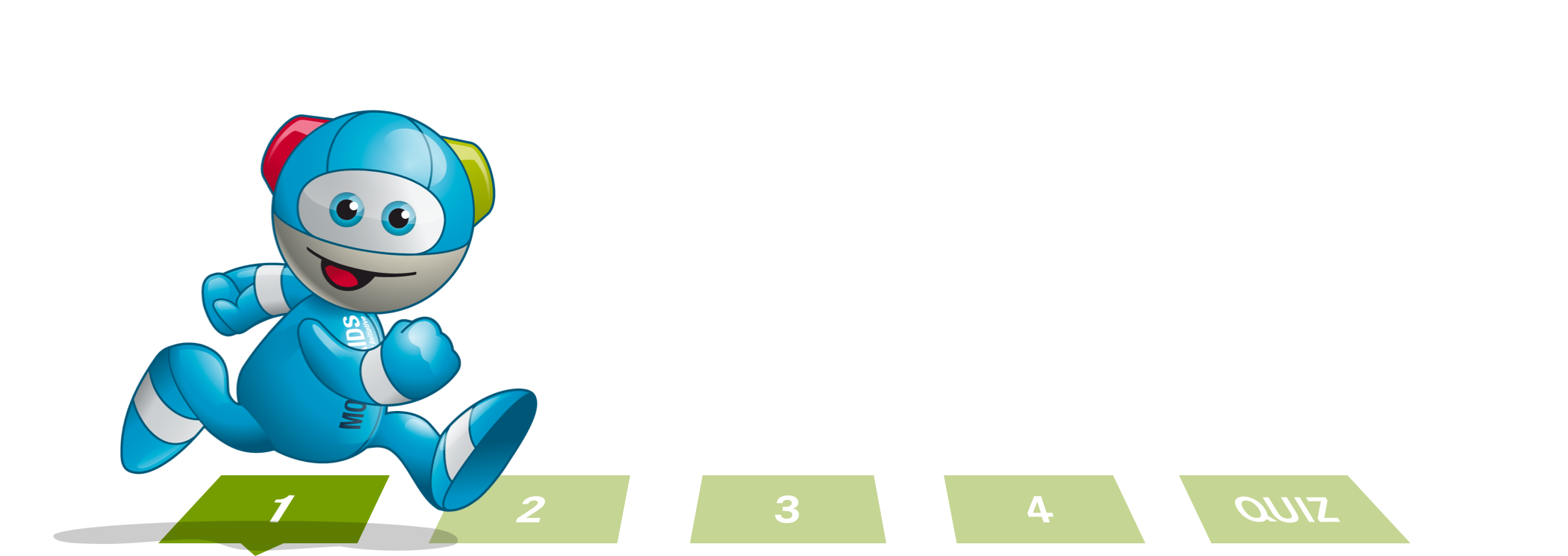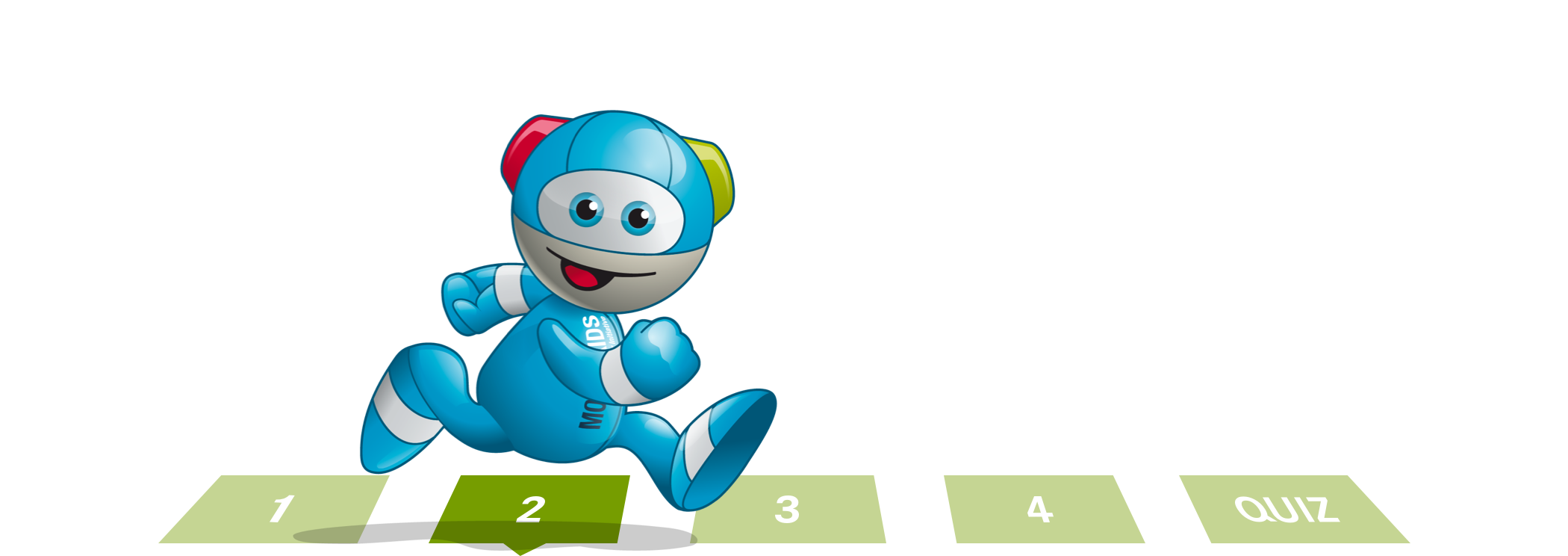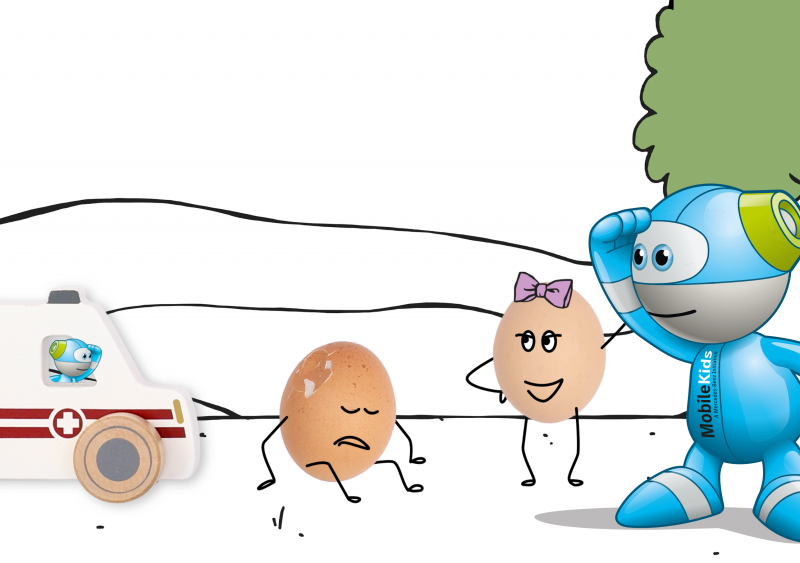We promise you that the older you get, the more often you'll walk these routes alone. So it's all the more important that you stay alert. Because there are signs that tell you where you are allowed to walk.
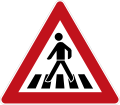
The red triangle with the pedestrian and stripes indicates a zebra crossing. You can cross the road here, and cars have to stop. Because car drivers sometimes don't pay attention, it's better if you obey the l-r-l rule first: Stop at the zebra crossing and look to the left, right and left again. Has the driver seen you, and stopped? Then briskly cross the road.
! The l-r-l rule: Look to the left, right and left again before crossing a road !
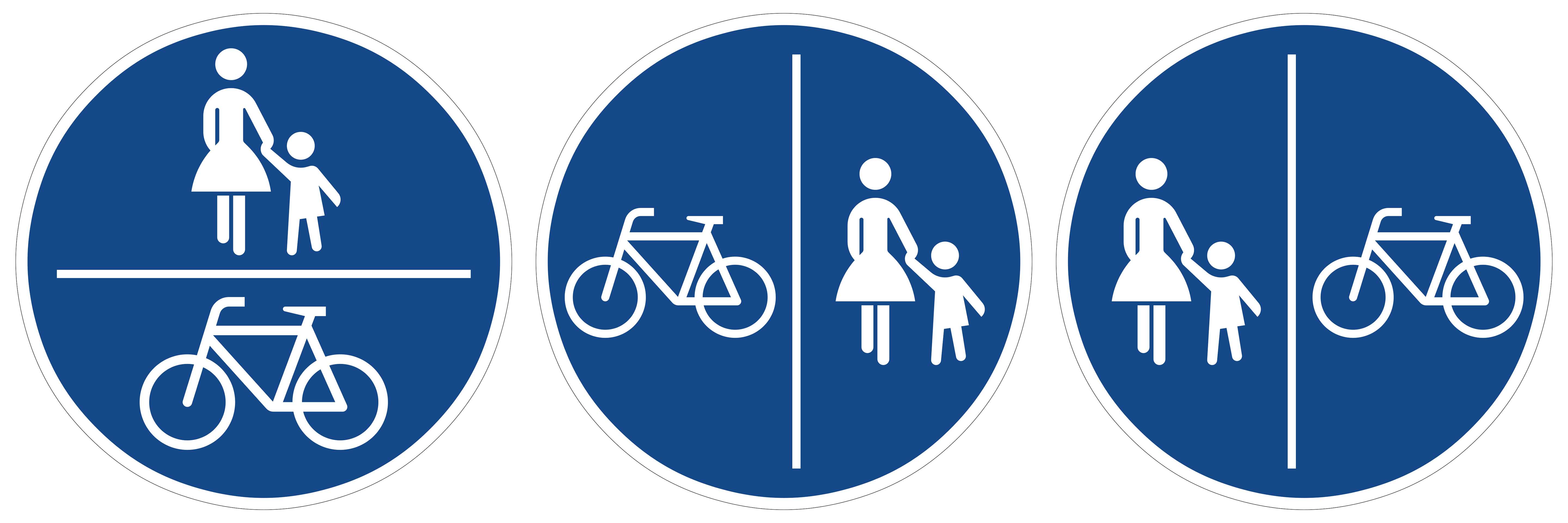
The three similar signs show you how the pavement and cycle path are divided. With the sign on the left, with pedestrians standing on the line, everybody uses the same path. With the sign in the middle, the pavement and cycle path are separate. Cyclists ride on the left side and pedestrians walk on the right side. The opposite applies with the sign on the right. Pedestrians walk on the left and cyclists ride on the right.

You've now got to know many blue signs. But this is a special sign. The blue rectangle showing children at play marks the start of a traffic-calmed zone. Motorists and cyclists must take extra care within this zone. Children and pedestrians may use the entire road, and also play there.
Have you understood everything? Then tell us what the "r" in the l-r-l rule stands for. Do you know the answer?


